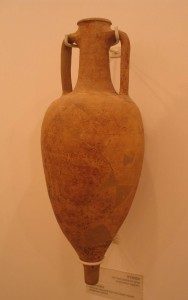Archeologists, from all over the world, work hard, often under extreme conditions, to give us glimpses of history, but most of all, to delight our imagination. Unfortunately, many of the amazing archaeological discoveries and ancient artifacts have been considerably degraded and eroded by time, leaving out many clues that can help archaeologists paint pictures of the past.
However, every once in a while, archaeologists hit the jackpot and uncover artifacts and objects that are reasonably or wholly intact.
Here is a list of some of the world’s oldest amazing discoveries and ancient artifacts that have been found intact:
1 – Voynich Manuscript
Let us begin our list of well-preserved ancient artifacts with one of history’s greatest and most perplexing mysteries, the Voynich manuscript.
The Voynich manuscript is an illustrated book, of unknown origin, written by an anonymous author in an unidentified alphabet and incomprehensible language. Although an exact date for its authorship has not been identified, as Carbon-14 dating has placed the creation of the book sometime between the years 1404 and 1438.
The manuscript, one of the most amazing discoveries, has been the object of intense studies by both professional and amateur cryptographers. But, to date, none have managed to decipher a single word. The Voynich manuscript is considered the Holy Grail of historical cryptography.
Speaking of Holy Grails, one of the next amazing discoveries on our list is a hoard of ancient gold!
2 – Staffordshire Hoard
In July 2009, an English treasure-hunting enthusiast, using only a standard metal detector, found the largest known Anglo-Saxon treasure trove to date.
The treasure, known as the Staffordshire Hoard, consists of more than 7000 pristine pieces of gold, silver, and garnet jewelry, and is valued to be worth more than 3 million pounds sterling.
The hoard, although, was deposited some time during the 7th century, most of the items found were well preserved. And because of the exceptionally well-preserved status of the majority of items in the collection, the hoard provides unprecedented value and excitement to historians and is expected to alter our perception of Anglo-Saxon history radically, which makes it one of the most amazing discoveries.
The next ancient artifact takes us back about 500 years into history, to the dawn of the new millennium. Here, we have another example of one of the many amazing archaeological discoveries that is generating profound insight and widespread excitement, as it has altered previously held notions of historical events
3 – Herculaneum
The ancient Roman city of Herculaneum, located in the Campania region of southern Italy, was smaller than neighboring Pompeii and closer to Mount Vesuvius. When Mount Vesuvius erupted in the year 79 AD, Herculaneum, being much closer to the volcano, became completely covered in a deep pyroclastic runoff.
The layers of pyroclastic ash, as thick as 50 feet in some places, covered every surface of the city and preserved it to this day. Remarkably, the grand majority of the buildings still possess intact roofs, doors, beds, and even volcanic ash-preserved food. Few ancient cities can match Herculaneum’s state of preservation, and it now stands as one of UNESCO’s World Heritage Sites, making it one of the most amazing discoveries.
If the stones of Herculaneum survived the scorching heat of Mount Vesuvius’ fires, it is no wonder that the next stone on our list, untouched by fire, survived intact through the years.
4 – The Rosetta Stone
The Rosetta Stone, one of the most amazing discoveries ever found, is an intact fragment of an ancient Egyptian stele made of granodiorite stone. It was inscribed with a royal decree and erected in the ancient city of Memphis in the year 196 BC. The decree, written in the name of the Egyptian Pharaoh Ptolemy V, was inscribed in three distinct languages: Ancient hieroglyphs, Egyptian demotic script, and ancient Greek.
The fact that the stone was inscribed with the same message in three languages, with minimal variation in content, provided archaeologists with the highly sought linguistic key that allowed for the deciphering of Egyptian hieroglyphs.
Had the stone been lost to history or found in a higher degree of deterioration, the world would still be blind to the wonders of mysterious ancient Egypt. This is why it is on our list as one of the most amazing ancient artifacts.
Just as the Rosetta Stone provided us with deep insight into the minds of ancient Egyptians, the next amazing discovery on our list provided archaeologists with profound knowledge of ancient China.
5 – Qin Shi Huang’s Terracotta Army

China’s famed Terracotta Army is composed of more than 8,000 life-size statues of warriors and warhorses, depicting the armies of China’s first emperor, Qin Shi Huang. The legendary emperor was buried with this army sometime around the year 210 BC.
Qin Shi Huang wanted to continue to command troops even after death, believing that by burying the statues with him, they would offer him protection for all eternity. The terracotta army was buried in battle formation, in three trenches, barely one and a half kilometers east of the emperor’s tomb.
Remarkably, each of these statues has unique facial features and characteristics, including different mustaches and hairstyles. Each soldier carried different weapons such as bows, spears, and swords. They even included soldiers of different ethnicities and age groups.
The impressive stone army, discovered in March 1974 near Shaanxi Province, is now one of the most visited tourist attractions in the People’s Republic of China. This remarkable discovery has provided archaeologists from around the world with an unprecedented glimpse into the practices of an ancient and proud culture.
The same can be said for the next amazing discovery: the Tomb of the Athlete.
6 – Tomb of the Athlete
An exceptionally intact tomb, dubbed the Tomb of the Athlete, was found in virtually the same condition it was left in some 2,300 years ago on the outskirts of ancient Rome. Inside the tomb are four skeletons: three belonging to males and one to a female, found wrapped in ceremonial regalia.
Also found inside the tomb were splendid works of painted ceramics, most of them decorated with intricate motifs and geometric patterns, bronze coins, as well as plates of rabbit, chicken, and goat meat. Other items discovered accompanying the deceased were two iron strigil instruments used by ancient Roman athletes during their training.
All the archaeologists involved in the discovery have expressed marvel at the fact that the tomb is so well-preserved because it lies relatively close to the surface, barely two meters below ground in some areas, making it one of the most amazing discoveries.
Around the same time that these athletes were being buried near Rome, hundreds of ancient Hebrew Scriptures were being hidden in caves near the Dead Sea.
7 – The Dead Sea Scrolls
The Dead Sea Scrolls, also known as the Scrolls of Qumran, are named for their discovery within the caverns and caves located in Qumran, on the shores of the Dead Sea. They correspond to the oldest and most complete testimony of biblical texts found to date.
There are a total of 972 manuscripts, most of which date back to a period between 250 BC and 66 AD, before the destruction of the Second Temple of Jerusalem by the Romans a few years later.
Most of the manuscripts are written in Hebrew and ancient Aramaic, with only a few written in Greek. While many of the manuscripts have been found intact, several were torn into fragments when first discovered to increase profits from their sales. Given all of these attributes, it is not far-fetched why this ancient artifact is considered one of the most amazing.
Speaking of Hebrew culture, archaeologists also relatively recently found 2000-year-old wine jars in Israel.
8 – Intact Wine Amphorae
Israeli archaeologists recently found two 2,000-year-old wine amphorae in a cave high in the mountainous region north of the country.
The archeological dig also found other amazing discoveries and ancient artifacts like several jars, bowls, and cooking pots made of clay. However, it is the wine amphorae that steal the show by virtue of their size. These wine jars measure over 27 inches tall and have a diameter of over 19 inches.
Most remarkable is the fact that the site is located in an extremely difficult-to-reach cave which begs the question, why did they choose to settle there?
The fact that cooking utensils were found suggests that people resided in the cave, at least for a while. Some archeologists also suggest that perhaps the cave previously had access that no longer exists today.
If you think that it is intriguing for clay pots to survive for thousands of years, then how about an almost intact ancient ship found at the bottom of the sea?
Tags: Amazing discoveries Ancient Artifacts Ancient discoveries Archaeology Archeological discoveries Archeology News; Historical Artifacts Discovery













